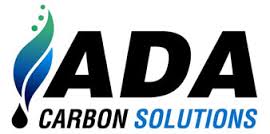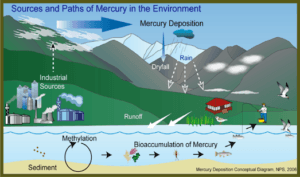While We Wait on Human Psychology, Let’s Find Another Way

ADA Carbon Solutions is one company innovating and profiting on alternatives to limit our environmental destruction while we search for solutions to large-scale change.
Major governments recognize human-induced climate change as an imminently threatening issue.
54% of people polled across 40 nations said that it was a very serious problem. [1]
Yet, as a global society, we have thus far been unable to sufficiently curb behavior that creates negative environmental externalities, especially when that behavior continues to boast positive benefits for some. Why is there not more united action?… Why is there not an RC class devoted entirely to this problem?
Psychologists have studied our collective sustainability inaction in the context of the well-known “bystander effect.” As psychologist Robert Gifford says, “psychological barriers impede behavior choices that would facilitate mitigation, adaptation, and environmental sustainability.”[2] In other words, even if we know about climate change, there are psychological hurdles we must collectively cross before we will ever take effective action. Psychologists also argue that associating direct positive benefits from environmentally responsible behavior is more likely to motivate action.[3]
So maybe, parallel to our glacially slow efforts to adjust, we can find ways to impede our impact in the interim through actions that see direct positive returns.
Tim Flannery, author of “The Atmosphere of Hope,” argues for this type of action in what he calls a Third-Way for impeding climate change (beyond changing energy consumption and exploring Geo-engineering). Flannery says that “Third-Way technologies recreate, enhance, or restore the processes that created the balance of greenhouse gases which existed prior to human interference.”[4] Third-Way technologies involve things like the carbon-neutral cement, chemically driven carbon-capture storage, and manipulation of geological processes. [4]
One of those “Third-Way” companies is ADA Carbon Solutions, who saw climate change regulation as an opportunity and built a business plan explicitly for reducing the emissions (with a focus on mercury) that coal-fired power plants produce.
Mercury is extremely harmful to humans and to the environment, yet as of 2015 mercury emissions were significant at 40% of U.S.’ coal-fired power plants.[5] Mercury occurs naturally in rocks, including coal. Dangerous mercury compounds (methylmercury) form when mercury is released from rock into the atmosphere and into water. While some of this happens naturally, a large percentage of emissions are manmade (mainly through coal burning).[6] In addition to the airborne danger it poses for the human central nervous system, mercury pervasively accumulates in organisms and poisons food chains. Mercury also affects micro-biological activity, impacting the usability of soil.[7]
Finding a “Third-Way” to remove mercury emissions has been challenging for a couple key reasons:
1. The technology to do so is highly complex.
2. Many of the solutions require high energy usage and generate high carbon emissions.
ADA Carbon Solutions develops products that oxidize mercury (and other pollutants) and then use an activated carbon “catalyst” to capture and remove it. ADA’s products/services help coal-fired utilities remove mercury while using 30-60% less carbon than comparable solutions in the market.
Why is a low-carbon emitting solution to mercury removal like this important in the interim?
In 2015, the Supreme Court overturned a mercury pollution regulation set by the EPA on the grounds that the EPA did not consider “cost” in its analysis of whether or not to regulate power plant pollution. EPA analysts estimated that the regulations would have resulted in 130,000 fewer asthma attacks, 4,700 fewer heart attacks, and 11,000 fewer premature deaths each year (in addition reducing mercury in wildlife and the atmosphere).[5] Coal power plants aren’t going anywhere soon, and apparently neither are the dangerous emissions they produce. ADA’s solutions provide a “Third Way” to avoid dangerous emissions of Mercury and limit residual carbon emissions until they do.
The best thing for the climate would be massive adaptations to the way we source and use energy. For the time being, I place my hope in endeavors that reap benefits through the mitigation of externalities. If we cannot shift the psychology enough to garner the commitment necessary to stop climate change, then we must lucratively incentivize our best minds to create technologies that limit our destructive path. Targeted “Third-Ways” like ADA Carbon Solutions provide us with a better chance of reducing emissions and limiting climate damage while we figure the whole psychology part out.
(795 words)
[1] Climate Change in 2016: Implications for Business, p.1. Rebecca M. Henderson, Sophus A. Reinert, Polina Dekhtyar, Adam Migdal. Harvard Business School Case, 2016.
[2] The Dragons of Inaction: Psychological Barriers That Limit Climate Change Mitigation and Adaptation. Robert Gifford, University of Vicotria. American Psychological Association, Vol.66, No. 4, 2011.
[3] The Emergency of Climate Change: Why are We Failing to Take Action? Cynthia M. Frantz and F. Stephan Mayer; Oberlin College. Analyses of Social Issues and Public Policy, Vol.9, No 1, 2009, pp.205-222.
[4] Atmosphere of Hope, p.155-163. Tim Flannery. Atlantic Monthly Press, 2015.
[5] U.S. High Court Topples Controversial Mercury Pollution Regulations. Marianne Lavelle. Sciencemag.org. June 29th 2015
[6] United States Environmental Protection Agency; www.epa.gov
[7] UNEP Global Mercury Assessment




Thank you for the analysis of the greater global emissions reduction effort and the ecological challenges faced by mercury pollution associated with burning coal. However, I wonder how ADA Carbon Emissions plans to address the issue of incentivizing coal power plants to implement their mercury capture systems. As you mention, the social costs of mercury pollution are tremendous, but I fear more than just conscious will be necessary to incentivize coal power plants to adopts ADA’s technologies. I infer that ADA is banking on increased governmental regulations to mandate power plants to adopt technologies like those which ADA offers, however, we see from your post that the U.S. government seems unwilling to move forward with this sort of legislation due to the cost concerns associated with restricting the burning of coal. Do you have any information on how ADA’s technology will create value for coal fired power plants (either through energy generation, the ability to sell byproducts produced through the capture of mercury, cap-and-trade credits, etc)? A very informative article though!
ADA seems to be banking on the fact that while the strictest regulations have been turned down, more compromised regulations will probably follow. Additionally, many states have their own regulations which are imposed (hence only 40% still having significant emissions), so there is still a large market for them. ADA’s greatest value prop is that they provide a much more carbon-efficient way to remove Mercury. They are also vertically integrated in that they source and deliver the raw material for the activated carbon.
I do however, agree with your reservations about the long term viability of the business model. Eventually we will get to a point where there are fewer coal plants and hopefully less application for the capture of Mercury. The point of the “Third Way” thesis is that there are a number of opportunities for businesses like these to prop up and be very profitable for shorter periods of time.
Thanks for sharing the article on this technology. I wasn’t aware of mercury emissions as one if the issues with coal combustion and this technology to combat the same. As you mentioned about “Third Way” I suppose carbon capture technology would also fall under the same thesis and perhaps be a profitable business if and when the regulations become costly enough for this technology to be used by coal plants. However, as AvO mentioned, I share the same concern in terms of how businesses can ever be incentivised for employing such technologies without regulatory force. At some level, it seems markets have not been able to solve this problem. I do have reservations on making energy this costly also via regulations. There is a significant population that cannot afford high energy prices and thus reservations from developing countries in adopting these regulations. What’s your opinion on going about resolving this somewhat of a damn if you do and damn if you don’t issue.